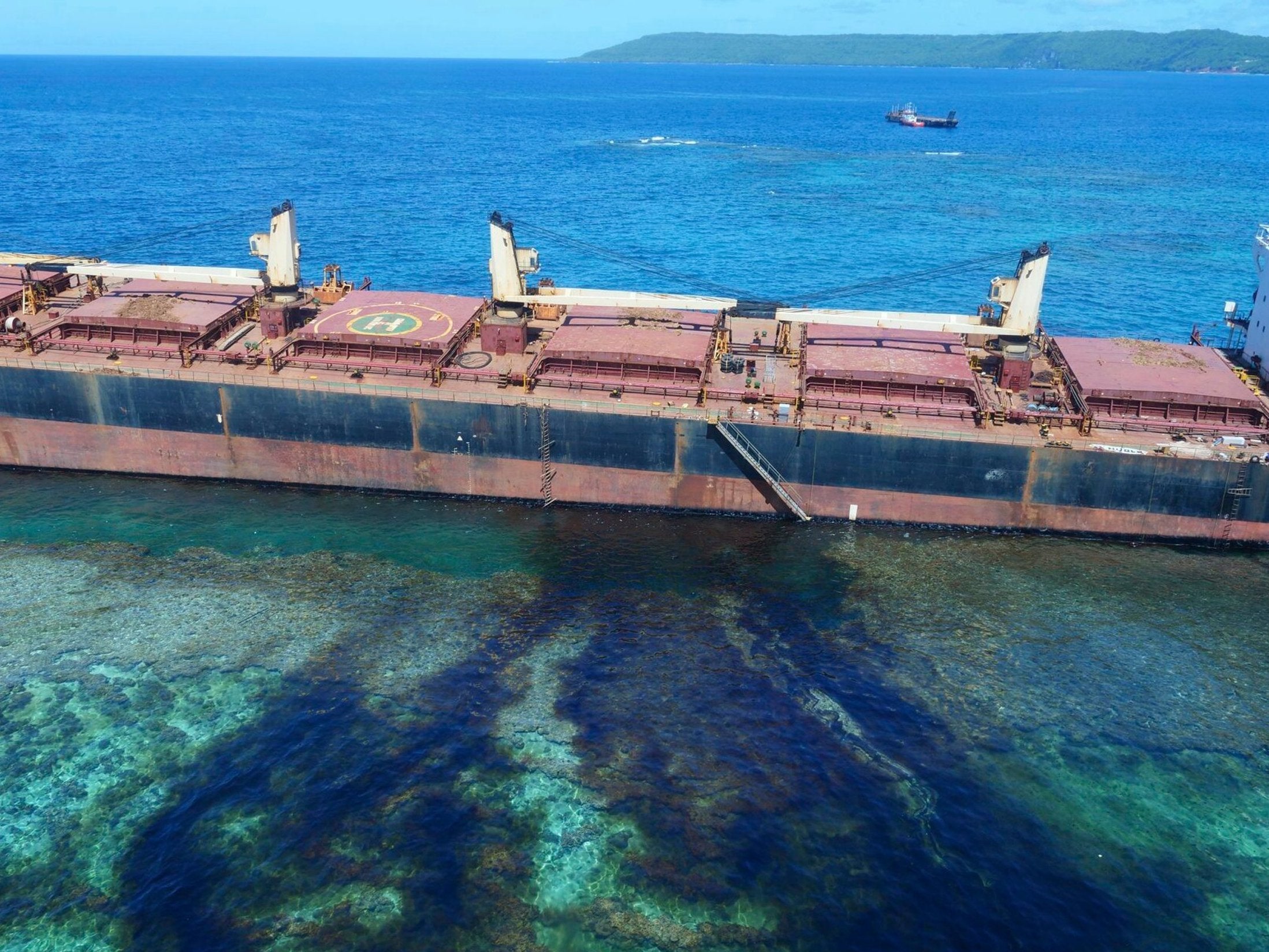Soloman Islands threatened with environmental disaster as ship leaks oil next to world heritage site
More than 600 tons of oil may leak into sea as charterer refuses responsibility for vessel

Your support helps us to tell the story
From reproductive rights to climate change to Big Tech, The Independent is on the ground when the story is developing. Whether it's investigating the financials of Elon Musk's pro-Trump PAC or producing our latest documentary, 'The A Word', which shines a light on the American women fighting for reproductive rights, we know how important it is to parse out the facts from the messaging.
At such a critical moment in US history, we need reporters on the ground. Your donation allows us to keep sending journalists to speak to both sides of the story.
The Independent is trusted by Americans across the entire political spectrum. And unlike many other quality news outlets, we choose not to lock Americans out of our reporting and analysis with paywalls. We believe quality journalism should be available to everyone, paid for by those who can afford it.
Your support makes all the difference.The Solomon Islands are facing an environmental disaster as a result of the slow response to an oil spill which occurred nearly a month ago when a large ship ran aground near a Unesco World Heritage Site.
Experts estimate that 80 tons of oil have already leaked into the sea and shore line in the ecologically delicate area of Rennell Island.
The ship continues to leak and new footage this week shows that little progress has been made to stem the flow of oil from the vessel.
More than 600 tons of oil remains onboard the Hong-Kong flagged ship.
It was chartered by Bintan Mining company in the Solomon Islands to transport bauxite, an ore used in aluminium production.
Australia's Department of Foreign Affairs and Trade said there was a high risk that the remaining oil would leak and it was "profoundly disappointed" by the slow response.
The Solomon Islands government said the responsibility to salvage the ship and minimise the environmental impact lay with the companies involved, according to Australian officials.
King Trader Ltd, the ship's owner, has sent a team to help salvage the ship.
Bintan claimed that, as a charterer, it bore no liability for the accident or responsibility for the vessel, according to Radio New Zealand.
The southern third of Rennell Island is a Unesco World Heritage site.
Unesco says the island is the largest raised coral atoll in the world and is a "true natural laboratory" for scientific study.
The 2,000 people who live on the island rely on the ocean and on the natural resources on the land for their livelihoods.
It says the island is the largest raised coral atoll in the world and is a "true natural laboratory" for scientific study.
Additional reporting by agencies
Join our commenting forum
Join thought-provoking conversations, follow other Independent readers and see their replies
Comments